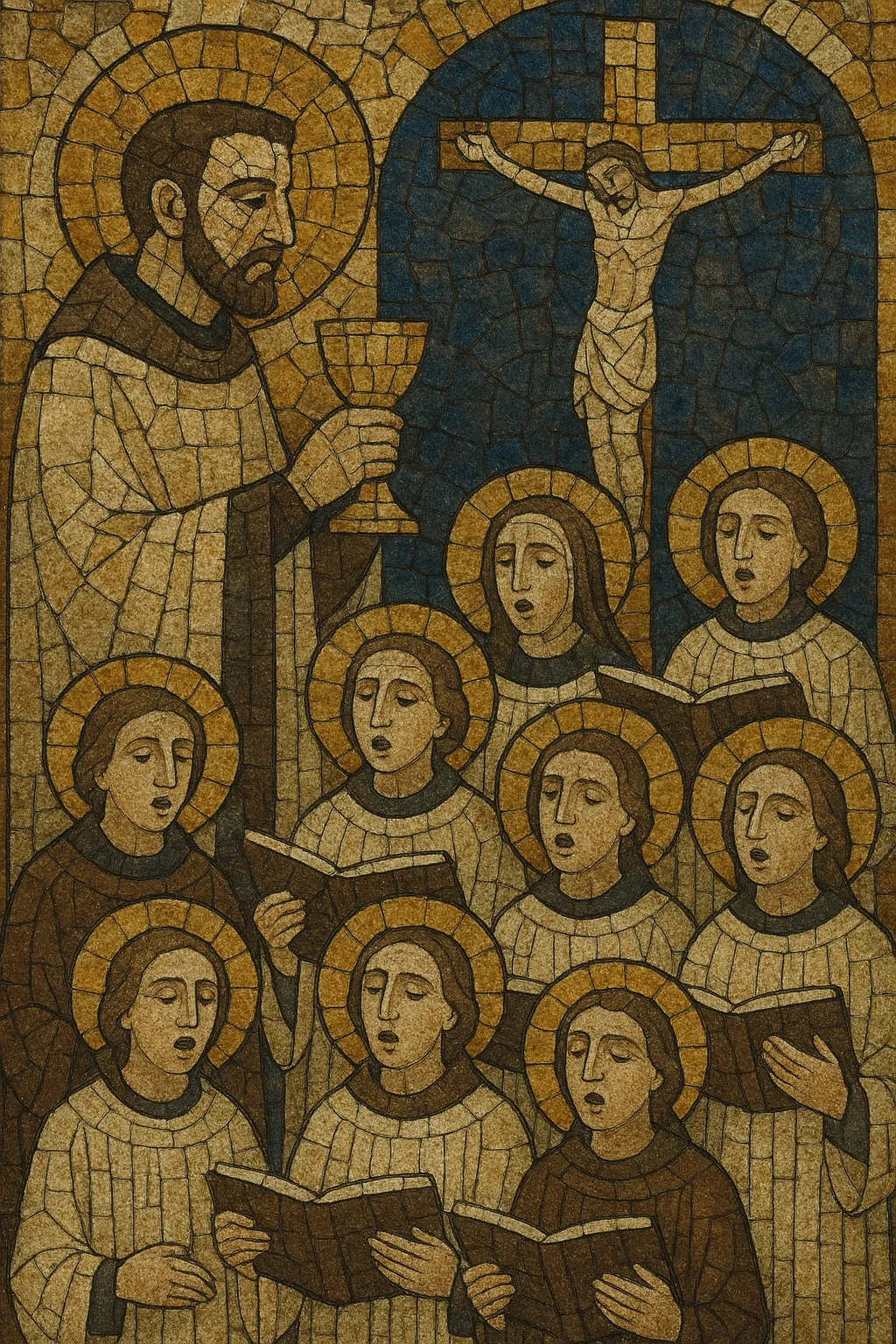Mass is a large-scale vocal genre that sets the Ordinary of the Roman Catholic liturgy—Kyrie, Gloria, Credo, Sanctus (and Benedictus), and Agnus Dei—most often in Latin.
It began as monophonic chant but developed into sophisticated polyphony and later into concert works for choir, soloists, and instruments or full orchestra. Across history, composers have used techniques such as cantus firmus, imitation, paraphrase, and parody to unify movements. The genre spans from austere a cappella writing to monumental symphonic-choral statements, and today is performed both liturgically and in the concert hall.
Common subtypes include Missa brevis (short Mass, often omitting the Credo or compact in scale) and Missa solemnis (festal, expansive forces and duration).
The Mass originated as part of the Roman Catholic liturgy, with musical practice grounded in monophonic plainchant (Gregorian and related chant traditions). In the later Medieval era, composers began adding simple polyphony to individual sections.
In the 1300s, the idea of composing a unified cycle of the five Ordinary movements emerged. Guillaume de Machaut’s Messe de Nostre Dame (c. 1360s) is the earliest famous complete setting by a single composer. In the 1400s, the Burgundian and Franco-Flemish schools (Dufay, Ockeghem) refined techniques such as cantus firmus and head-motifs to create structural unity across movements.
Josquin des Prez, Obrecht, and later Palestrina codified imitative counterpoint and transparent text-setting. Parody (imitation) masses reworked material from motets or chansons into multi-movement Mass cycles. The Council of Trent’s emphasis on textual clarity shaped late Renaissance practice, exemplified by Palestrina’s lucid polyphony.
Instrumentation expanded with continuo and orchestral forces. The Mass became both liturgical and concert genre: Bach’s Mass in B minor stands as a summa of Baroque styles. In the Classical era, Haydn and Mozart wrote grand Missae solemnes for court and ecclesiastical settings, blending symphonic form, operatic expression, and sacred tradition.
Composers such as Beethoven (Missa solemnis) and Bruckner created architecturally vast settings, integrating symphonic development, rich harmony, and spiritual intensity. The Mass remained central to sacred concert life, even as liturgical practicality sometimes favored shorter works.
Modernists and neo-classicists revisited the genre with fresh language and forces: Stravinsky’s austere Mass, Poulenc’s Mass in G, Kodály’s Missa brevis, and Frank Martin’s Mass for Double Choir show a cappella clarity and lean orchestration. Contemporary composers continue to write Masses in Latin or vernacular languages, drawing on chant, modality, tonality, and modern techniques for both church services and the concert stage.


